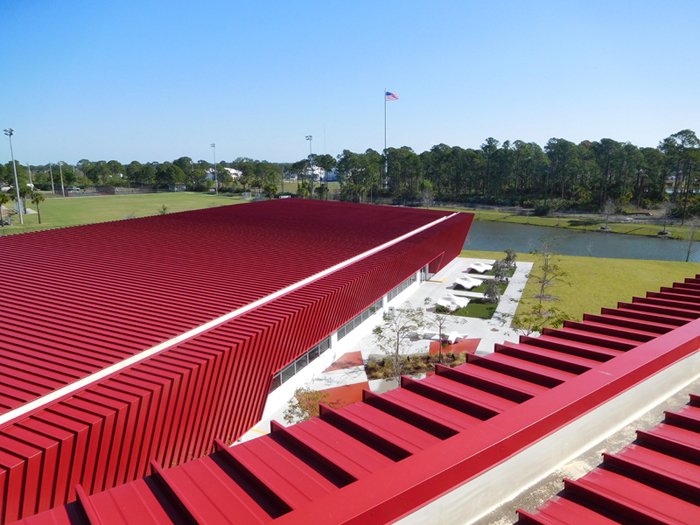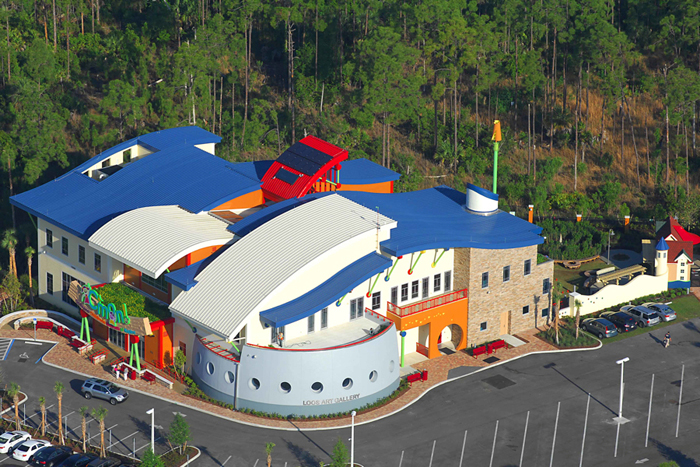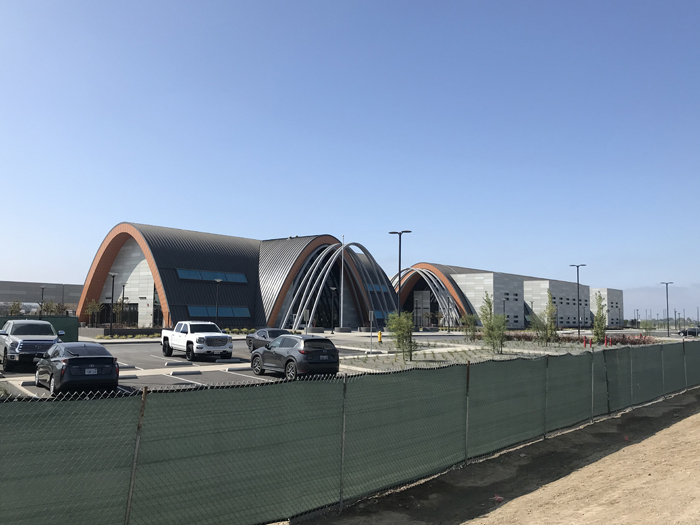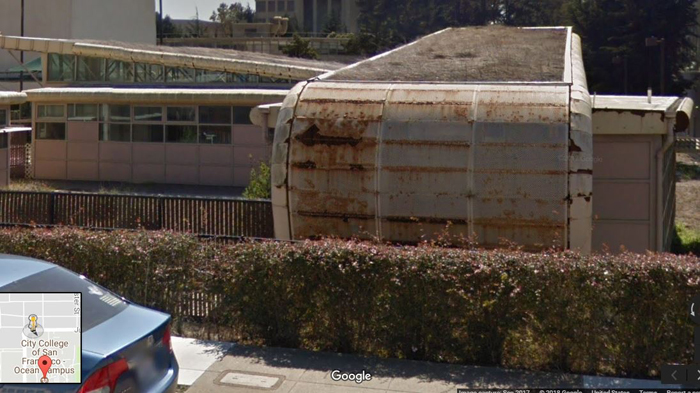More Than Looks To A Good Metal Roof

By Jay Mulligan and Joe Mellott, IMETCO
Norcross, GA — Interestingly enough, most roofs are installed outside and as such are likely going to be exposed to an active and sometimes “angry” environment. In conversations with customers and owners, discussions of aesthetics can sometimes proceed
the discussion of long-term performance of metal roofing and cladding solutions. As a metal roofing and cladding manufacturer, we get it, you can do lots of cool stuff with metal but at some point the specifiers, engineers, and designers need
to roll up their collective sleeves and do some “nerd work”. (Please note that sometimes nerds wear short sleeves and as such would not require sleeve rolling, we hate to generalize.)
There are several environmental factors that need to be considered when selecting the appropriate panel, substrate, engineered attachment and finished coating. Let’s take a moment to step through each and provide a basis for further discussion
between suppliers and design teams when making a final selection.
Fire
Most people are well aware that metal does not “burn” and just as many likely understand that hot metal can transfer copious amounts of heat (see touching a hot pan or sliding on a hot playground slide). In any case, while an excellent
non-flammable solution it is important to understand the basic testing and requirements for fire-resistance when designing a roof system. FM Global, Underwriters Laboratories, and other agencies provided detailed approved systems that meet and
exceed the specific requirements for spread of flame, burning brand, intermittent flame and flying brand. In most cases metal roofs are “metal roofs” with regard to fire testing. Typically the driving factor of performance
is the substrate; where combustible decks need to be considered in overall system performance. A metal roof installed directly over a plywood, OSB or nailbase, with only an underlayment between (nailed or adhere), is usually an unrated system. Meaning
it does not pass any fire rating test. Metal roofing installed over a wood deck requires a fire barrier between the roof and the combustible deck. Fun Fact: metal roofs do great with regard to flying brand testing, definitely something to consider
in areas where forest fires may be a concern. Fun Fact Two: Flying Brand is a great band name.
Wind
Wind blows. And in many places it blows harder than others. There are standard inclusions that are a key part of industry standards to measure the specific wind and wind-driven rain resistance of metal roof and wall panels. The most
appropriate test for metal panels is likely ASTM E 1592, which allows for not only the measurement of the seam performance but also the edge conditions. Bottom line, it is a requirement to understand the panel performance as a starting point
for qualifying your design for the specific conditions it will face. The next, and required step (at least by code in reference to ASCE 7) is to determine the wind load of the specific building structure. Wind uplift calculations and engineering
are essential for appropriate system design. Specific environmental conditions to understand include location of the building in reference to other structures and topography, building usage, height of the building, slope of the roof (and wall system),
and geographic location of the structure. Qualified engineers and manufacturers can review these conditions and can provide accurate information (calculations) on the allowable material gauge, panel widths, and clip (attachment) spacing.
Wind speed for your specific location can be found on ASCE wind speed maps. If you are in a hurricane zone there will be specific additional considerations for sustained wind loads. Also, if you are in a tornadic zone, you may need to consider
specific design for higher importance level occupancy (schools, fire departments, hospitals, et al).
Geography
Understanding the specific conditions of your geographic location is critical in designing your roof and wall cladding systems (you do not get a free pass on this even if Sam Cooke claims it may end up to be “Wonderful”). Question one,
are you near a large body of salt water? You can typically determine this by looking at a map or examining how “relaxed” the local inhabitants are. salt water can do a number on incorrectly designed metal roofing and wall cladding
products. The galvanic effect and rust formation is greatly accelerated by the presence of salt water and salt spray. While there are specific coatings that can extend the life of metal components, deterioration can be “controlled”
by selecting the correct substrate. Aluminum is always the material of choice for coastal applications. Aluminum does rust, but in most cases aluminum rust is limited to surface formation and non-penetrating rust and can be greatly mitigated
through the use of a coastal paint system. Natural metal, such as zinc, and copper will age more quickly in coastal environments. In some cases this patina effect is desired, but it is important to understand the patina process is a “natural”
effect and somewhat out of control.
It's best to avoid steel substrate in coastal environments as most steel producers do not warranty their products to fabricators “proximate” to salt water. Stainless steel can have its advantages in coastal environments. However,
even Stainless Steel will show the effects of the environment by “surface rust”, especially if perforated, when exposed to salt spray. This can be removed without harm through a regular cleaning process but it may not meet the desired
appearance without regular maintenance. Other common environments with high corrosive pressure, where special consideration should be used with steel or alternative substrates are: water treatment plants, airports, industrial applications, power
plants, areas with high acid rain etc. Fun Fact Three: Saltwater is an adjective; Salt Water is a noun phrase. So don’t drink salt water from the saltwater pool...
Other Stuff
This article did not enter into detailed discussion of two other extreme considerations for roof and wall cladding design; snow loads and extreme daily temperature variances but we’ll leave that for the next article or maybe HBO can try to finish
it (see botched conclusion of GOT).


Specifying the correct metal roof systems for the conditions, whether the concerns are fire, wind, salt spray or other environmental contaminants, could mean the difference between having long-lasting, beautiful buildings, or unsightly structures that age rather ungracefully.

Conclusion
It's really not a conclusion but every article needs an ending, so consider that every job is manageable, and that collaboration between engineers, designers, architects, owners, and material providers creates the best result. Understanding the
desired look and performance and doing the nerd work upfront is best in establishing long-term performance. Saving money (or time) can lead to greater expense in the future or premature failure. But when you get it right “what a
wonderful world it will be”.
About IMETCO
 IMETCO
is a leading manufacturer of metal products for the building envelope, including high-performance metal roofing, metal wall, and metal deck systems and accessories. For more information, visit www.imetco.com.
IMETCO
is a leading manufacturer of metal products for the building envelope, including high-performance metal roofing, metal wall, and metal deck systems and accessories. For more information, visit www.imetco.com.